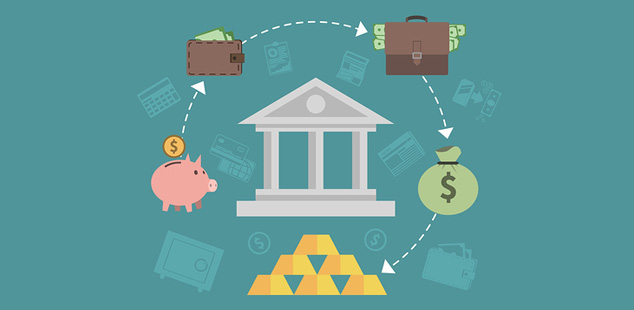
How would negative interest rates impact the value of gold, silver, and other precious metals in the United States?
Since interest rates are so low today, many depositors find that the returns on their savings accounts and even bank CDs don’t really keep up with inflation. That’s considered a negative return because savings don’t keep their purchasing power over time. Now imagine putting money into a bank and actually having the bank charge you for the right to keep your money in an account. That’s the clearest and simplest definition of a negative interest rate. Instead of getting paid to let a financial institution use your money, you’d actually have to pay them.
This isn’t exactly how negative interest rates usually work in the real world because the term applies to banks rather than individuals. Private banks get charged by the central banks to hold money. However, they may take steps so they don’t actually have to charge their depositors. To understand this, it might help to consider some examples from other countries.
The Impact of Negative Interest Rates in Europe and Japan
Dropping interest rates below zero is exactly what the European Central Bank did several months ago. In January of 2016, the Bank of Japan did the same thing.[i] This kind of move isn’t supposed to punish individuals as much banks that hoard cash. It’s supposed to encourage financial institutions to lend money to borrowers and to make loans more attractive because they are cheaper.
However, it does impact individuals and organizations in a couple of ways:
- It can encourage and not discourage hoarding. Unsurprisingly, the Japanese demand for home safes has increased as interest rates dropped below zero.
- Negative interest rates also drove down returns on bonds and other fixed-income securities in Europe.
How Would Negative Interest Rates Impact Gold and Other Precious Metals in the U.S.?
It makes sense to assume that the same economic climate that might drive Japanese savers to buy safes to store their money in would also make investing in precious metals a more attractive alternative to paper money. The United States hasn’t ever had a history of interest rates that have dropped below zero, but in the last few years, U.S. interest rates have been kept very low, and gold and silver have done relatively well.[ii] Could the U.S. begin negative interest rates in the future?
Low interest rates, considered cheap money, do exert downward pressure on the value of dollars. In other countries, negative interest rates have also decreased returns from bonds. When money and other fixed investments decrease in value, Americans tend to turn to tangible assets to preserve the value of their savings, and recently, gold has done well in this situation.
Precious Metals as a Store of Safety
Rather than buying home safes to store dollar bills, it’s easy to conclude that Americans would buy their safes to store tangible assets that tend to hold value. Of course, gold and silver are usually considered the safe haven in times of uncertainty about monetary values. Some forms of precious metals can also be held inside of a precious metals IRA, so Americans might increase their shares of these types of assets in order to preserve the value of their retirement savings. While some people might be encouraged to speculate in riskier stocks because they hope to generate income, precious metals are a smart part of a diversified portfolio as a way to store value during uncertain economic times.
Additional Sources:
[i] http://www.bloombergview.com/quicktake/negative-interest-rates
[ii] http://www.coinweek.com/bullion-report/bullion-shark-negative-interest-rates-and-their-possible-effects-on-gold-and-silver/

